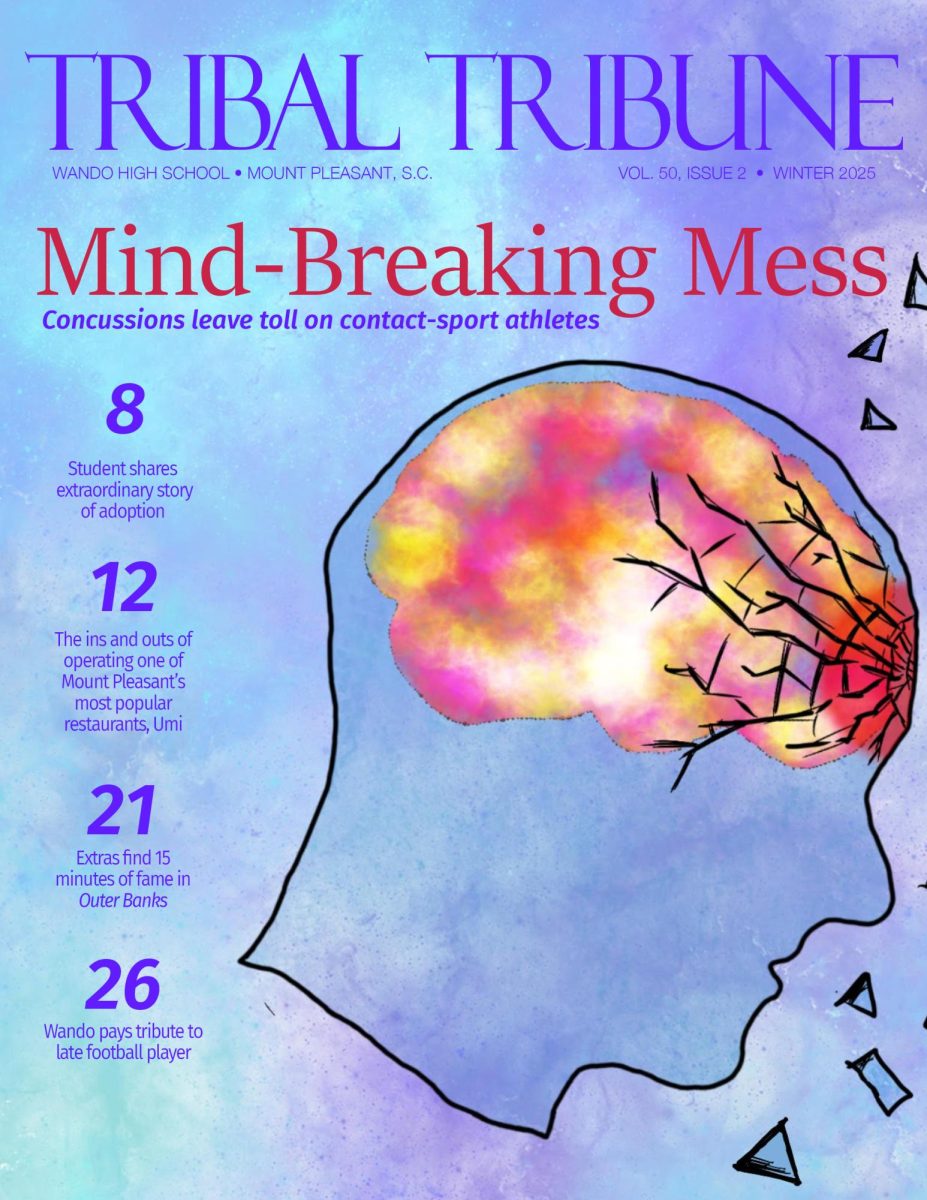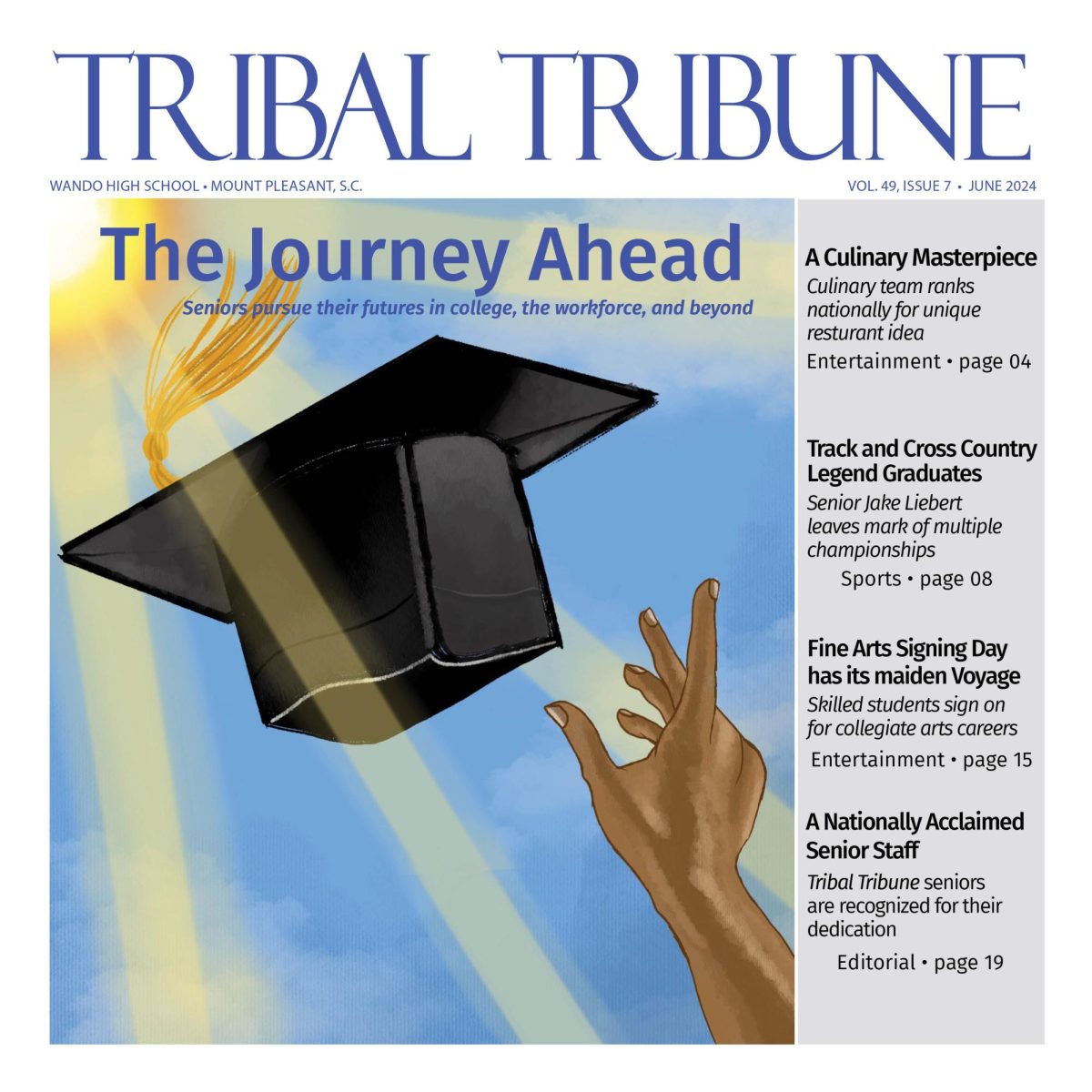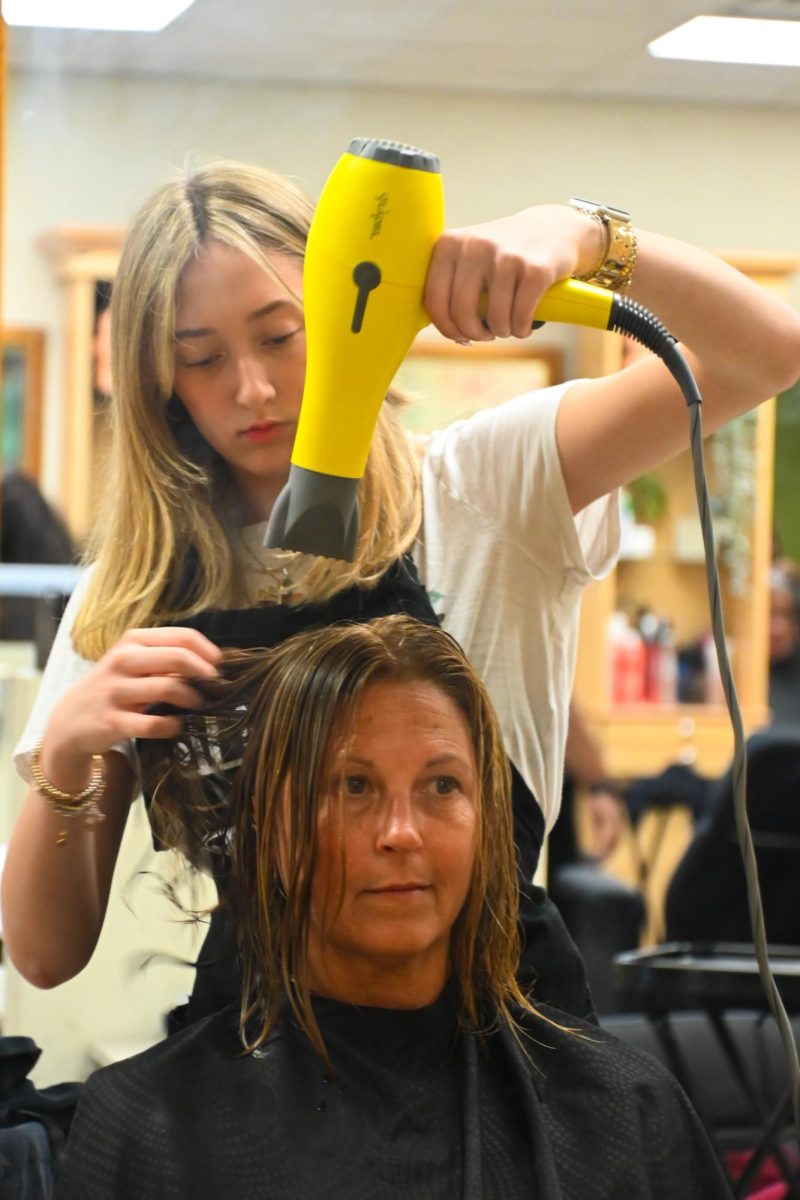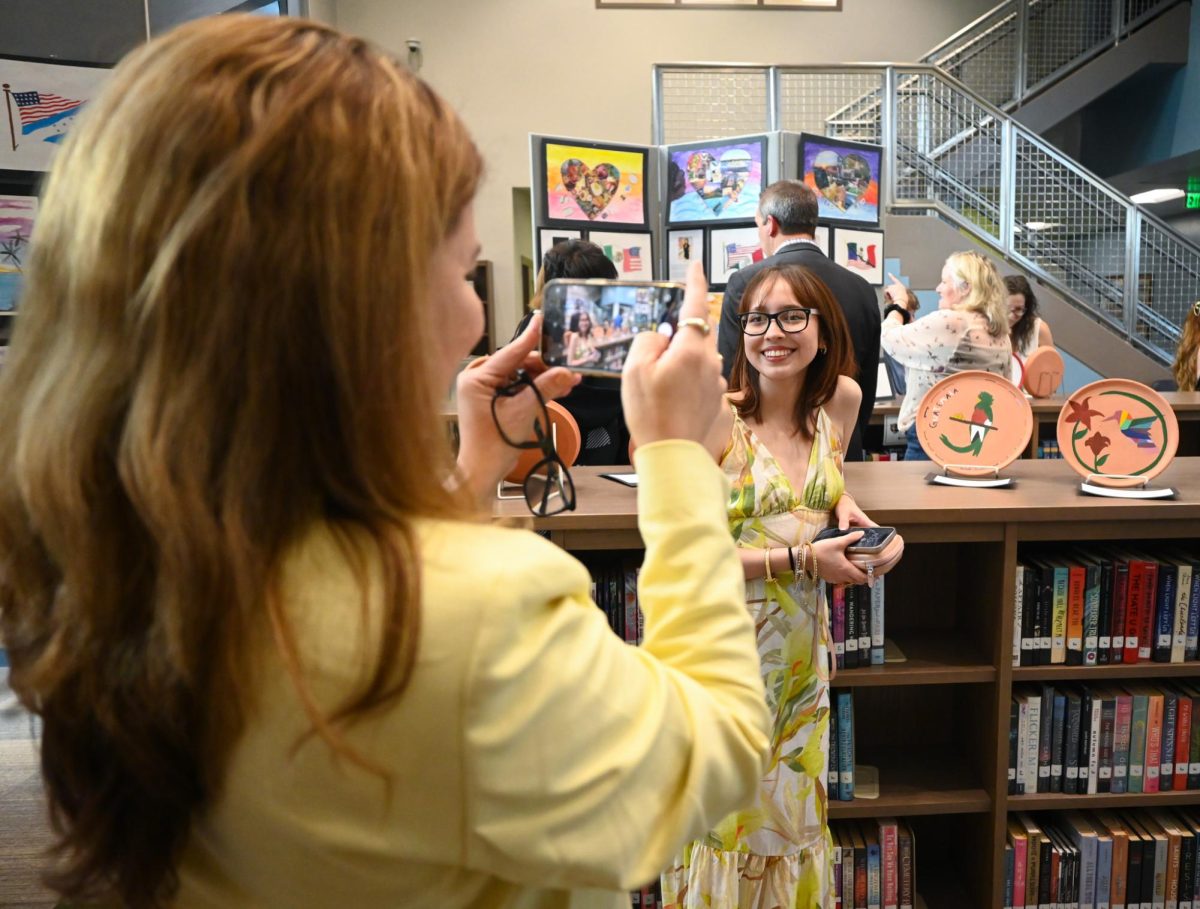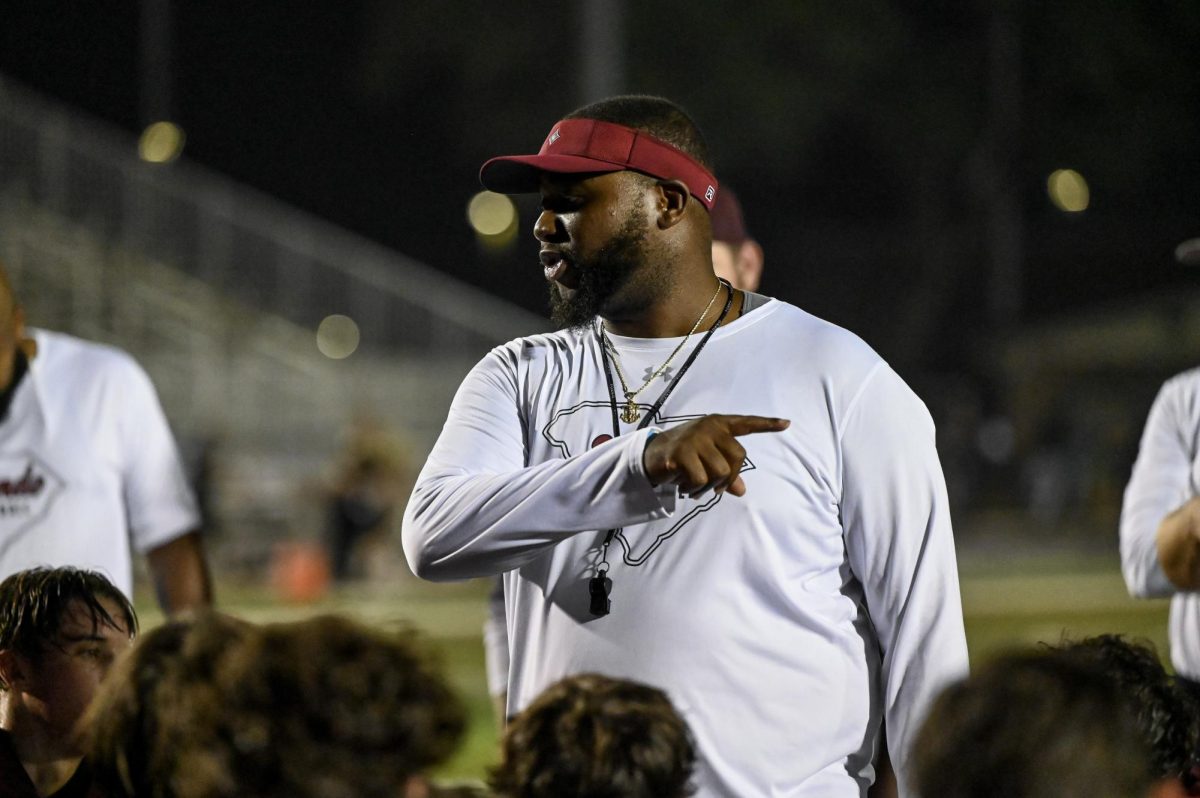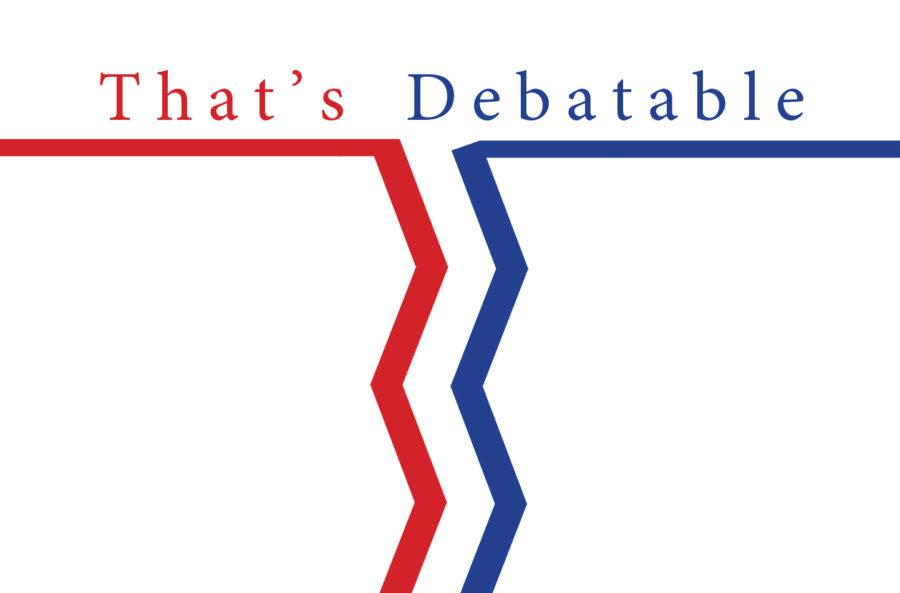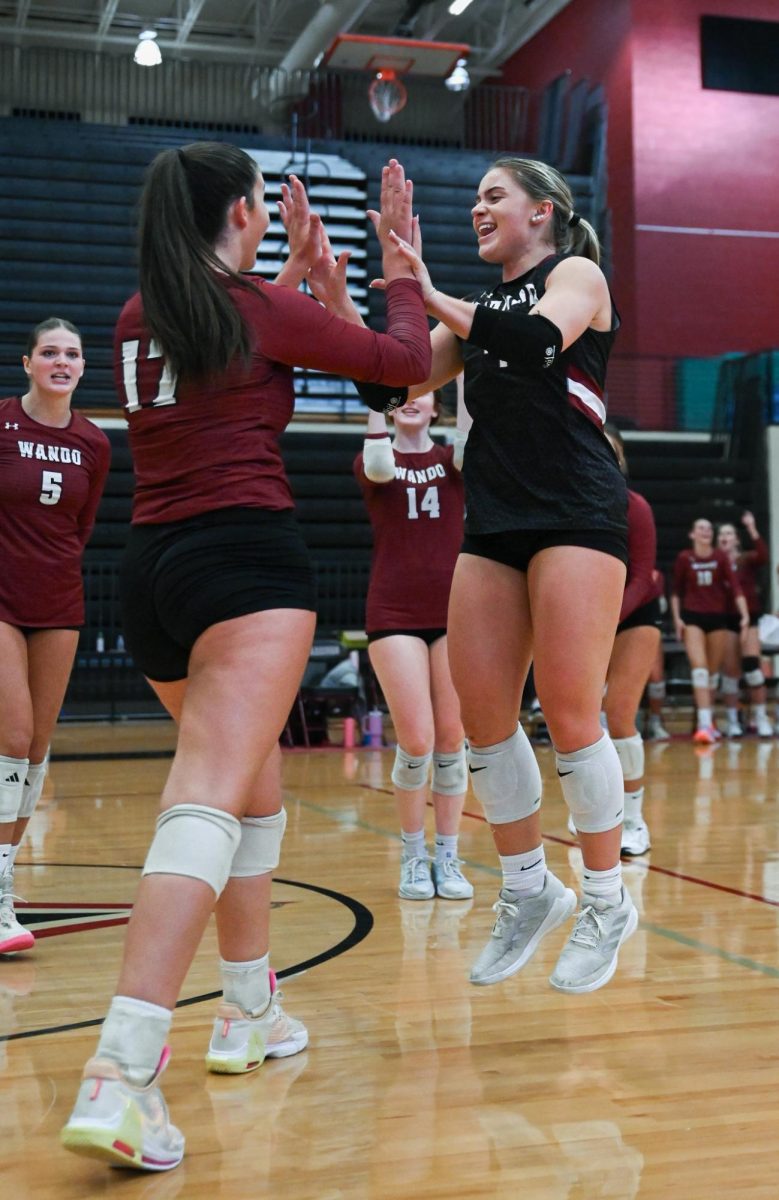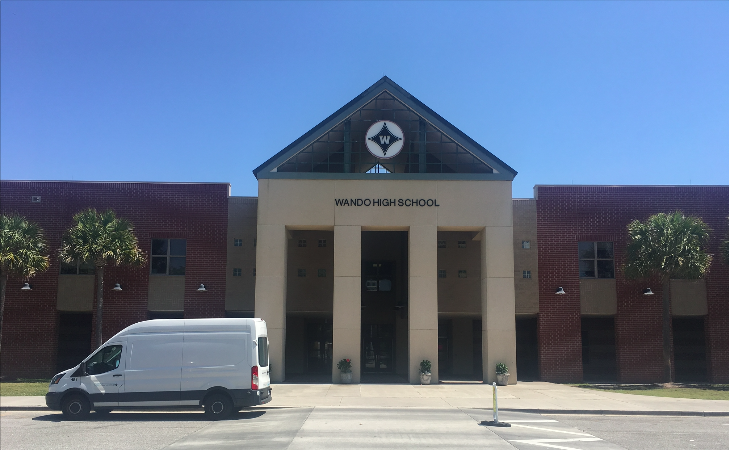New program seeks to break academic barriers
April 26, 2019
The Advanced Placement surveys students took in March are intended to change the school’s social and structural dynamic.
And that’s a fact.
Equal Opportunity Schools is a non-profit that has missioned itself with providing minorities and low-income students equal access to college-readiness classes, according to marketing and communications manager Tofa McCormick.
For equity-focused AP Physics teacher Sara Rutledge, this is a dream come true.
Conversations of equal opportunity trace back four years ago when Rutledge, AP Academy board member Jason Brisini and a few other administrators and teachers hosted events to invite underrepresented students to AP classes.
“We were making a dent,” Rutledge said. “…But equal opportunity schools is able to make a bigger change here than we were ever able to make on our own.
The non-profit has already enrolled 40,000 underrepresented students in college-readiness classes over 180 districts, 29 states, and 540 schools McCormick said.
“(But) there’s ¾ of million missing students– students of color or low-income students,” he said.
Wando students included.
To solve the education disparity in Charleston County School District, EOS representatives and district representative held a meeting, said Fronde Stille, Director of School Counseling Services for CCSD.
“Based on that meeting we perceded to partner with them,” she said. “…To provide their services for both Wando and Stall High School, to close the race and income participation gap in AP courses for students.”
After initial meetings with the school district, EOS met with both schools equity teams, a group of administrators who work alongside them, to initiate the survey that will identify missing students for AP classes and discuss ways to accommodate them and other course takers.
“One of the ways we break the barrier is through our program called action for equity,” he said. “Phase one we call access opportunity”
Access Opportunity allows EOS advisors to meet with the equity team and address students and faculties pre-existing biases.
“It (the survey) will provide them the information,” said Assistant Principal Jason Drayton, who is serving as the equity team leader. “It really boils down to them, the perception students have of the school, as it relates to AP programs. Also, as it relates to adults.”
Once biases are identified, the direction from there is identification– finding potential students who are misrepresented or non-represented that would thrive in higher-level courses.
Missing students are determined by multiple facets including their level of grit, testing capabilities and fortitude which are listed on their incite card — a card that shows the results of a student’s survey, according to McCormick.
“They are looking at characteristics… to help determine whether they would be able to be successful in an Advanced course,” Stille said. “It’s like equal opportunity schools put a little bit of a twist of looking at more of a student and their personal drive.”
Students identified by the equity team are encouraged by their most trusted staff member, as asked on the survey, to take higher level courses.
“Who they feel comfortable with — this is significant because a kid who may have doubts about taking an Ap program this is there go-to person,” Drayton said. “So if we educate this person, train this person, on how to properly respond, how to create that relationship, how to encourage that kid it’s going to help to increase the enrollment of minorities in APs.”
As the school’s dynamic changes with first generation students taking AP classes — the need for a support system becomes more transparent.
“We’d go back and we’d say…‘Can you initiate before school, Ap study hall or a lunch time study hall?’” McCormick said. ‘“Can you get your teachers to facilitate a class-period that is open where anyone who has questions can come and get the support that they need?’”
At Stall High School, faculty came up with a creative way to accommodate all AP course takers by allotting two periods in the day for AP class — one for learning and one for self-progression and homework.
“To do something like this (create equity) you have to change your school culture,” Rutledge said “…We have so many kids who are taking Ap classes who are sleep-deprived, who are really overwhelmed. I think if you start to meet the needs of this group it will start benefiting other circles. So I think it’s a school culture shift that is healthy
for a lot of groups of kids.”
A more diverse classroom also benefit students academically and socially, McCormick said. Surveys in the past from Equal Opportunity Schools across the nation reflected student and staff responses that said they don’t want underrepresented students in their classes “because they are afraid it will affect their learning.”
According to the article “The Benefits of Diversity in Schools” by Queen’s University of Charlotte, when classrooms foster students of all backgrounds “it promotes creativity, as well as better education.”
“If you are all sitting in a classroom and your perspective is one square block, your perspective is one square block,” McCormick said. “But if your perspective is enlarged you are open to much more. Now you are learning with so many different perspectives playing into that teaching, learning environment.”
Bridging the gap within education can carry over to the outside world.
“You start small,” McCormick said. “Everyone is friends in the classroom. And then over a couple of years…you don’t see what you describe, but you start seeing more of a blended culture…It’s not just the rich kids, the poor kids, the white kids the black kids. You are walking around with like-minded students.”
The equal opportunity revolution will take years before it has met its goal, but according to Drayton, when all is said and done the work doesn’t stop there. Wando would continue to thrive and focus on improving what has already been established.
“We can’t just let them come in create a plan… then they leave and we just drop the ball and it just goes back to what they used,” Drayton said. “… So whatever they implement, we have to consistently follow in order to keep that enrollment up.”
Equal opportunity has been anticipated for years starting with early attempts to create a more diverse college-readiness class environment.
And with the emergence of Equal Opportunity Schools at Wando High School, McCormick asks anticipators to remember “It is not an overnight thing.”
“We work our magic,” he said. “Our magic is not the song and dance… we are coming and we are sharing and coaching on a lot of resources and analytics.”



